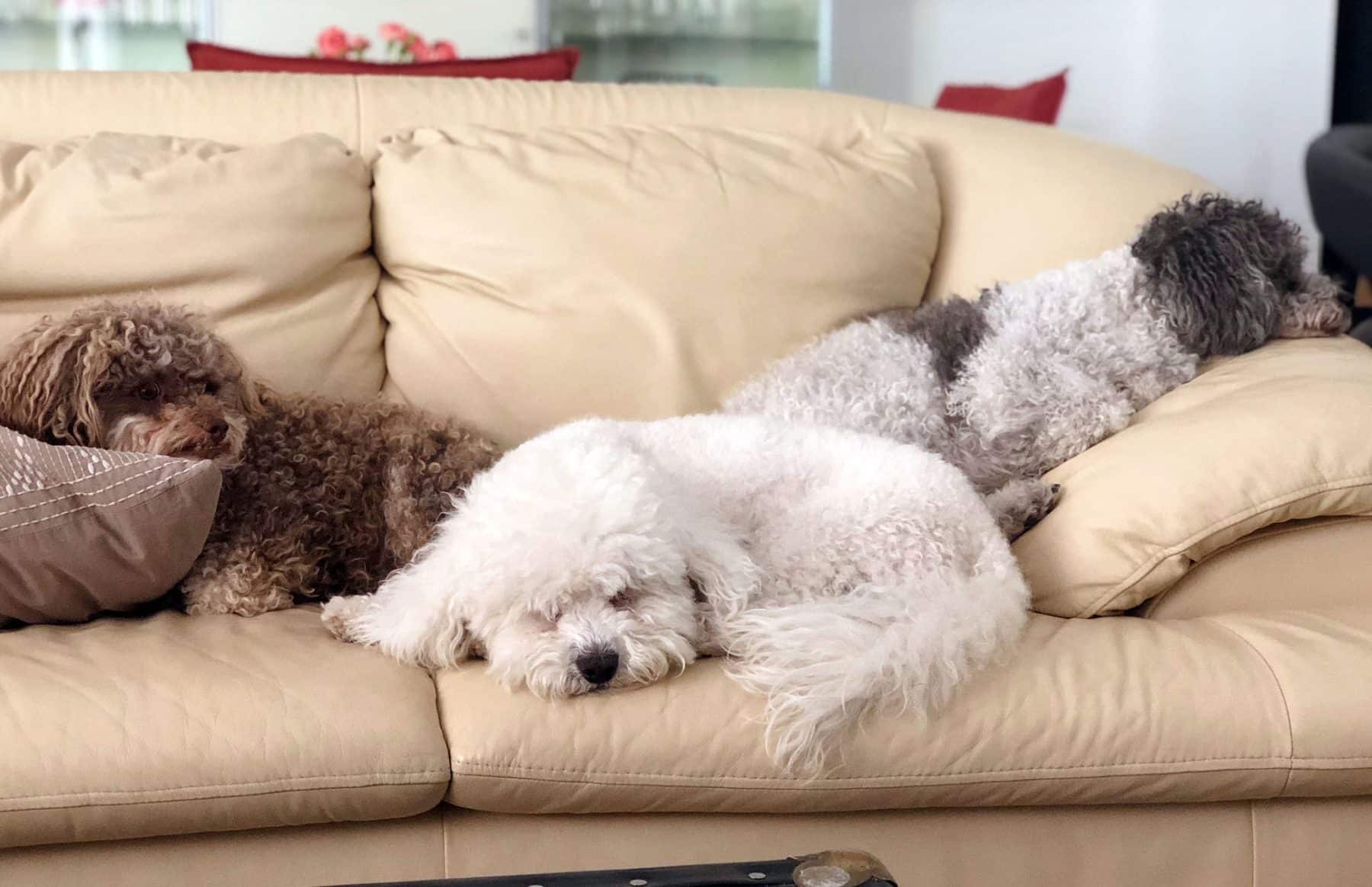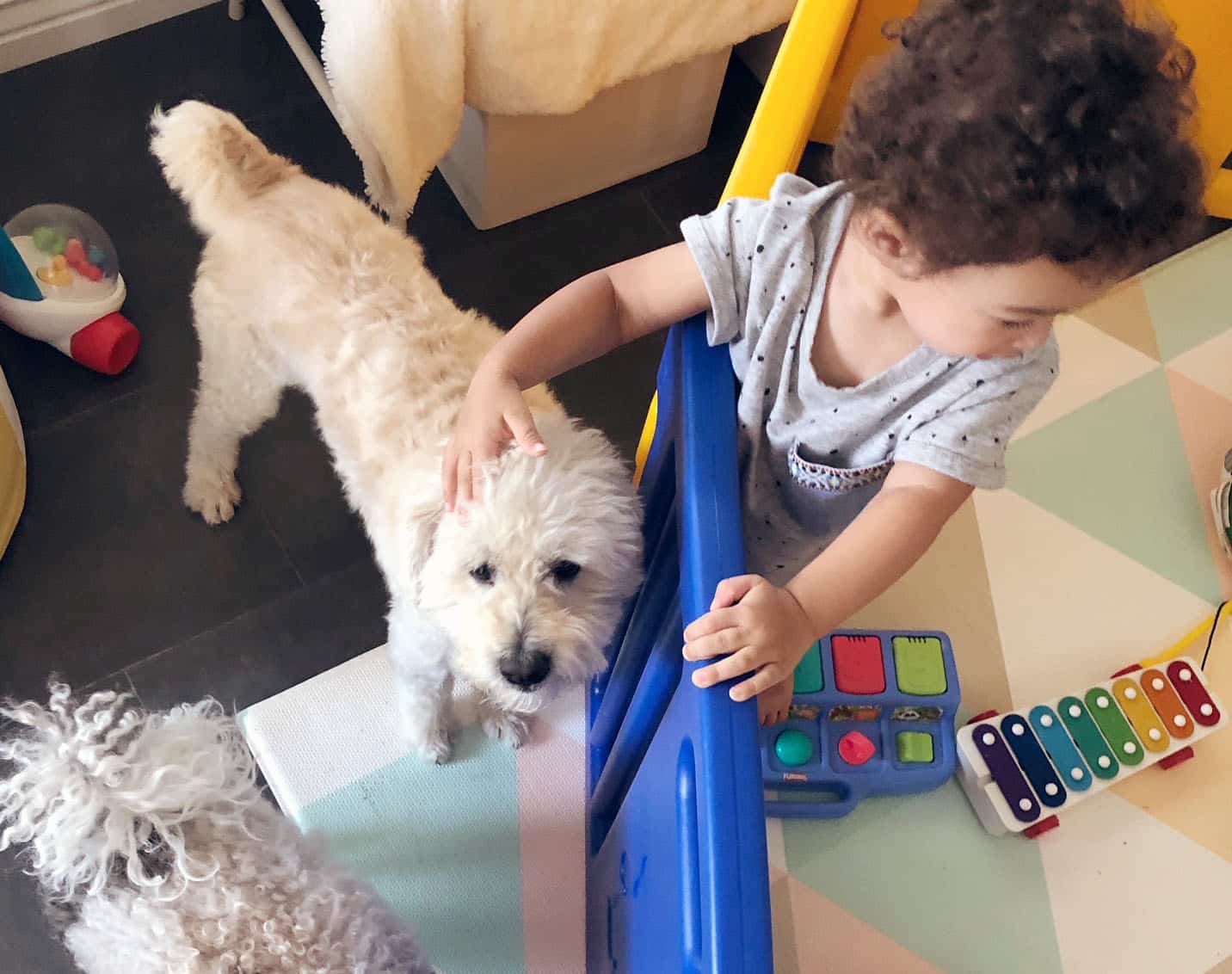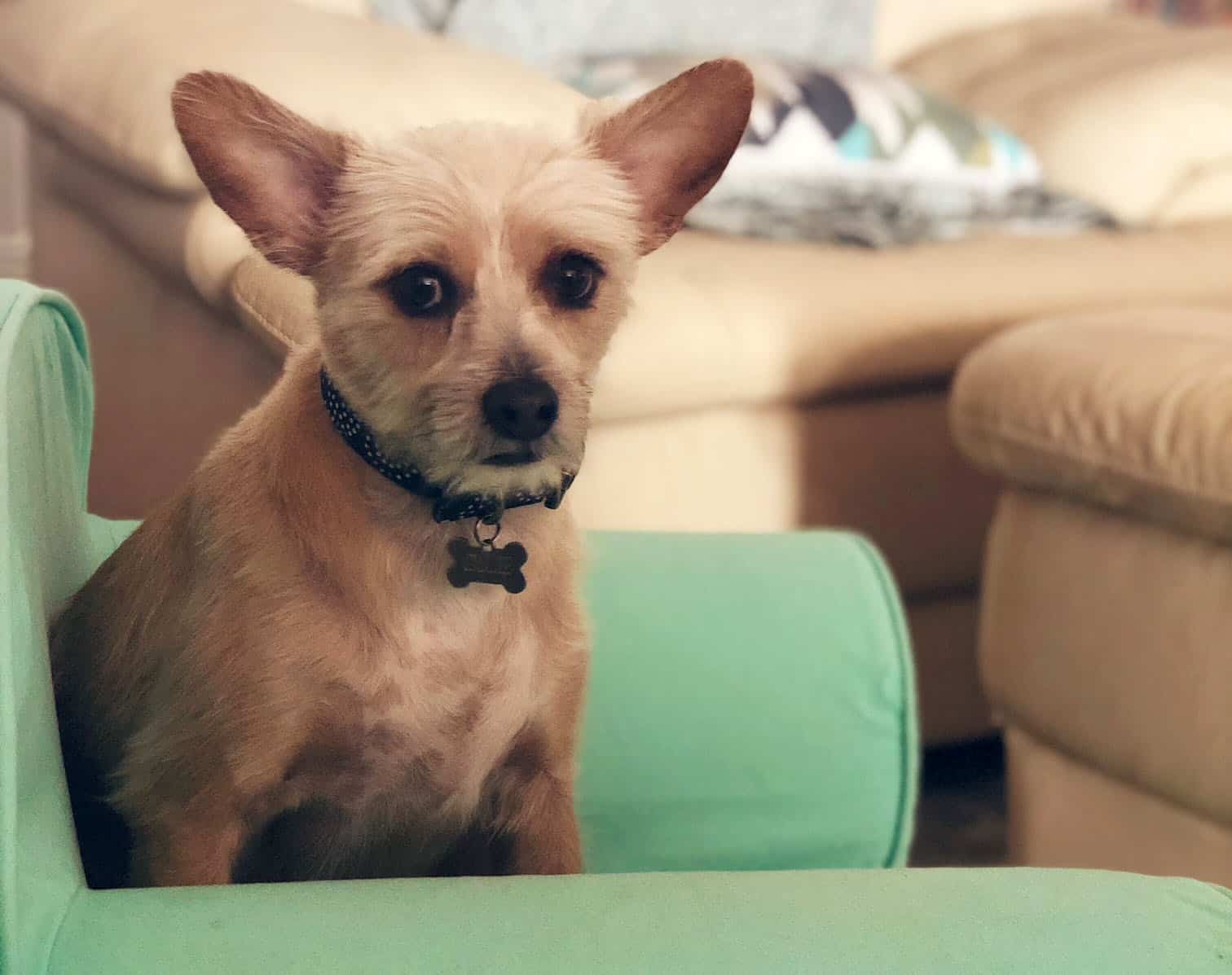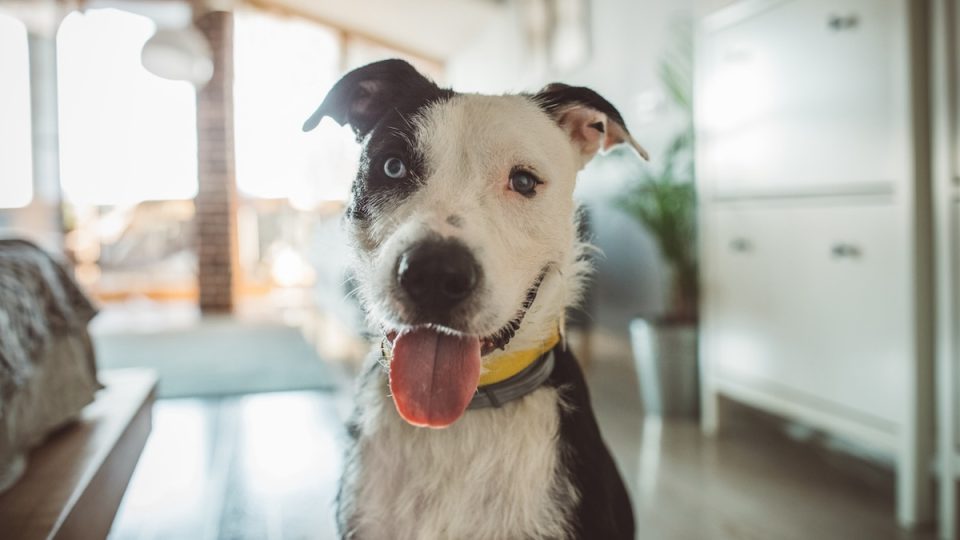- This post contains affiliate links. Read more here.
- Not a substitute for professional veterinary help.
Leaving your pets in someone else’s care can be a stressful experience—especially if it’s the first time, or if it’s your first time with a new sitter. It gets even more difficult when your pup has special needs, or certain quirks that only you know how to manage. A great dog sitter will rise to any occasion, helping your pup feel comfortable and safe while giving you peace of mind. So how do you sort through all the available options to choose the best dog sitter for your dog?
We spoke with Nicole Kohanski, the founder, dog behavior expert, and certified dog trainer at Wiggle Butt Academy LLC. We also got the input of dog sitter and writer Melanie Lewis, who shared her personal experience as a pet parent and sitter on Rover. Together, they offer great advice for pet parents looking for a dog sitter.
What Makes a Good Pet Sitter
The best dogs sitters have several important qualities:
- They love dogs and treat them with respect
- They have extensive experience caring for dogs
- They’re communicative and compassionate
- Their schedules allow them to be present with your dog often
- They’re prepared to meet a variety of needs, from the basics like food to extras like nightly snuggles
- Their home is a clean, healthy environment that meets your dog’s needs
It might be obvious, but a love of pets is an absolute must for any good dog sitter. Your pet sitter should also have experience in and knowledge of the care of dogs. They don’t necessarily need extensive training in dog behavior (though it’s a huge bonus!), but a better-than-basic understanding is required. That means extensive knowledge of dog body language, plus how to respond to signals of fear, anxiety, overstimulation, and excitement. For example, you don’t want a pet sitter to reinforce excitement behaviors like jumping for attention—and you don’t want them to further stress a scared dog by approaching when they’re nervous.
Great pet sitters are compassionate, caring, and communicative. While some dog sitters work other jobs outside the home, they never leave their pups alone for too long. They must be ready and willing to meet your dog’s needs, whether it’s regular mealtimes, medications, or even nightly snuggles before bed.
Pet sitters on Rover and writer Melanie Lewis explains it this way: “My recipe for being a great dog sitter is pretty simple: I treat every one of my Rover dogs as an extension of my family. They’re another one of my dogs…. It’s just that I only see them once or twice a month, or maybe only during spring break, or over major holidays.”
If a pet sitter is hosting your dog in their home, they’ll not only need space for your pup, but also the ability to provide a clean, healthy, and comfortable environment. Your dog will need regular access to a bed, water, and somewhere to play and to poop too. Some pet sitters have separate spaces for each of the dogs in their care, while others allow the dogs to hang out together throughout the day and night. Many take special care to make sure their guests are cozy and happy.
“No matter the length of the visit, as their sitter, I’m always the home away from home that they’re excited to visit,” says Lewis. “I send them home happy, healthy, and ready for a long nap.”

Pets Rye and JoJo, and a beloved guest dog Obi snoozing. Courtesy of Melanie Lewis
Choosing the Best Dog Sitter for Your Pet
Once you’ve covered the basics, the next step is to ensure your chosen sitter meets your pet’s specific needs. As Nicole Kohanski explains, “The qualities necessary depend on the needs of your dog. We recommend defining your needs before looking for the ideal pet sitter.”
Here are some things to consider about your dog—and what it’s important to consider in a matching sitter.
| Your Dog | Your Sitter |
| Energy level | Space, lifestyle, availability for walks and games |
| Medical history and needs | Ability to offer medications and get your dog care in an emergency |
| Behavior and reactivity | Experience with similar dogs, training, house rules |
| Ability to get along with other animals and children | Other pets and children in the home, especially policy when it comes to sitting multiple dogs and allowing them to interact |
| Current and future sitting needs | Range of services offered, location |
Tip 1: Consider whether your sitter has access to a car
Your dog’s energy level, medical history, behavior, and more all play a part in determining whether a particular pet sitter is right for you. “If your pet has special medical needs, consider a sitter who drives,” recommends Kohanski. “We never know when an emergency can arise.”
Tip 2: Find a sitter who fits your dog’s unique personality
A sitter equipped to deal with emergencies is huge, but even little elements of your dog’s personality and lifestyle are important. If your pup loves to lounge on the sofa all afternoon or cuddle in bed at night, your sitter’s house rules regarding pets on furniture and sleeping arrangements might be particularly important.
Similarly, some pet parents might not want their dog to learn that snoozing on the furniture is okay, or they might have stricter rules for their pup’s behavior. It’s important to find a sitter who’s philosophy about raising and living with dogs matches your own.
Tip 3: Consider the number of dogs your sitter is watching at any given time
Similarly, the number of dogs your sitter cares for at one time, or if there are children in the home, can impact your pup’s experience. And if you have a large or reactive pup, you’ll need a sitter specially trained to handle that.
Tip 4: Identify the range of services you’ll need
You might also think about the services you expect to need over time. For many people, the ideal pet sitter offers a wide range of services, including dog boarding, house sitting, drop-in visits, dog walking, and doggy day care. Having one sitter that can meet all your needs is helpful in ensuring that you and your dog are covered whenever the occasion arises.
For pet parents with a singular need, such as occasional drop-in visits to walk your dog during a long work day, narrowing your search may help you better target the right sitter for that purpose.
Depending on how much notice you expect to have about your scheduling needs, consider finding two or three sitters you’re comfortable with. The more sitters you have that you feel good about, the more flexibility you have.
Tip 5: Decide how important location is
Finally, there’s location. Even though it’s nice to live right down the street from your sitter, other locations might be just as, or even more, convenient. A sitter by your home might be best for drop-in visits or last-minute bookings. But you might consider one located near your work if you do doggy day care, or close to the airport if you go on frequent business trips.
Using a platform like Rover allows you to filter through potential dog sitters with criteria like location, services offered, expertise, and price. The public reviews are especially helpful in evaluating a dog sitter’s track record, and may also provide additional insight to make you feel more or less comfortable with putting your dog in their care.
“I personally prefer sitter profiles that include a lot of reviews and pictures of their home and outdoor areas,” says Lewis. “That way, a new client knows exactly what to expect when comparing that profile to other potential sitters.”

Dog sitting guest Hank gets some love from the sitter’s child. Courtesy of Melanie Lewis.
Questions To Ask a Potential Dog Sitter
When you talk with a potential dog sitter for the first time, it’s good to come prepared with a list of questions. Asking the right questions can help you evaluate a dog sitter’s skill and understanding. It also lets you know whether their approach is the right fit for you.
Kohanski recommends the following questions to ask a potential dog sitter:
- How many pets do you care for per day?
- How much time can we expect you to spend with our pet(s)?
- If our dog does something perceived as wrong, what will you do?
- What are your arrival and departure procedures?
- If you become sick or have an accident, do you have a back up?
- How and how often will you provide updates?
- Do you have pet CPR and first aid training?
- How many years of experience do you have?
- Is this a side job or your main profession?
- How do you handle an emergency?
- What safety recommendations do you have?
- Do you have any references?
There are several answers to these questions that are acceptable in the pet sitting world. What matters most is whether the sitter’s response works for you and your pet. If any answer goes against the needs you’ve defined, or even gives you pause, they might not be right for you and your dog.
If your pet has special needs (such as separation anxiety issues) or medical needs (such as a daily pill routine), it’s important to mention that during your initial conversation with your potential sitter. You’ll want to ensure they’re comfortable and capable of handling all of your dog’s needs before any issues arise.
“Open lines of communication are essential, and if you have any additional questions for your sitter before or during your stay, ask them!” says Lewis. “After all, you’re entrusting your sitter with your beloved pet, so they should be more than happy to answer any of your concerns.”
How To Ensure Things Go Smoothly With Your Dog Sitter & Dog
Once you’ve chosen your sitter, there’s a lot you can do to make sure your dog’s stay is successful:
- Plan ahead—even if you don’t need a sitter yet, know who you would go to in an emergency
- Schedule a meet and greet and get a tour
- Introduce your dog to your sitter’s animals
- Write out a detailed guide to your pup’s care
- If you’re nervous, schedule a “happy visit” or a low-stakes trial run
Plan an emergency sitter
It’s important to plan ahead when looking for a pet sitter. If you’re in a time crunch or an emergency boarding situation, you may end up with the first sitter you reach out to, regardless of whether you and your dog are fully comfortable with them. With more time, you can not only have deeper conversations with your prospective pet sitter, but also set up a “meet and greet” before committing.
Set up a meet and greet
Meet and greets are an important part of finalizing your first booking with a new sitter. They often happen after you’ve gotten answers to your most important questions, but before you actually leave your pup in the sitter’s care. It’s a chance to meet and talk to your prospective sitter in person. You can also discuss what both you and they can expect from the stay.
“My goal at the end of each new meet and greet is for the pet parent to feel completely comfortable leaving their dog in my care, because I’ve done my homework, proven my expertise, and left no questions unanswered,” says Lewis.
“I give my new clients a detailed run through of our home life, and a tour of all the spaces their pup will be living, playing, and hanging out in. I also ask detailed questions about their dog, so I can learn more about my guest such as their feeding schedule, what they eat (wet/dry/combo food or specialty), any dietary restrictions (including severe allergies), any medications or specific medical needs, and their daily routine (how many walks, naps, and play sessions they usually get).”
Introduce your dog to your sitter’s animals
If your dog will be staying in your sitter’s home with their pets, or if they’ll be bringing their dogs to yours, introducing the animals is a critical step in your meet and greet. Even if both pups are generally good-natured, you can never be certain until you make the introduction.
Dogs can get territorial and protective of their home when meeting a new dog, so you might consider meeting at a local park or other neutral ground for the initial introduction before getting a tour of your sitter’s home. Watch your dog’s reaction, and pay attention to how they interact with the sitter’s pets. If they don’t get along, it might not be the right fit, no matter how great your sitter is.
Write out care instructions
Another way to ensure a good experience is to write out a detailed guide to your pup’s care, says Kohanski. Include the following:
- Feeding times and amounts
- Any medication details
- Your veterinarian’s information in case of an emergency
- Commands your pup knows
- Things they’re allowed or not allowed to do, such as getting on the sofa
The document gives the sitter something to reference during their stay, and it can help you rest easy knowing they have all the information they need.
Go for a happy visit or schedule a trial run
Kohanski also recommends “happy visits” to get your dog and the sitter comfortable together. These go beyond the meet-and-greet and are intended to prepare your sitter for the task of looking after your pup.
“Take a few co-walks with your new sitter to show them the preferred walking paths. For special needs pets, do a dry run of care with you there. Go through the routines together to make sure instructions are clear. If you’re nervous, don’t hesitate to book a local hotel and stay away but close by for a trial night or two. This is especially important if your upcoming trip is far away or remote.”

Canine guest Ollie after getting caught napping in the baby chair. Courtesy of Melanie Lewis
Additional Tips for Choosing a Dog Sitter
Nobody knows your dog like you do, so it’s up to you to choose the right sitter for your pup. Always trust your gut when evaluating prospective dog sitters and throughout the process.
“If your potential sitter describes any form of punishment as a consequence to behavior, choose someone else,” says Kohanski. “If the sitter doesn’t match your must-have list, keep searching. If you feel like your sitter isn’t listening or actively participating in your conversation, move on.”
She describes corporal punishment as the biggest red flag in prospective dog sitters. “Avoid people using fear, force or pain to control your dog.” She particularly recommends trainers who have completed the FearFree Pet Sitter certification.
On the flip side, there are certain things that make a prospective pet sitter particularly good, says Kohanski. “Green flags are people with education in dog body language, pet CPR, and those who are prepped with their own questions for you.”
The work to find a the best dog sitter for your dog isn’t always easy, but it’s always worth it. When you leave your pup in the care of someone you trust, you can enjoy your time away without worrying. And your dog? Well, they just might be having a great time too.




